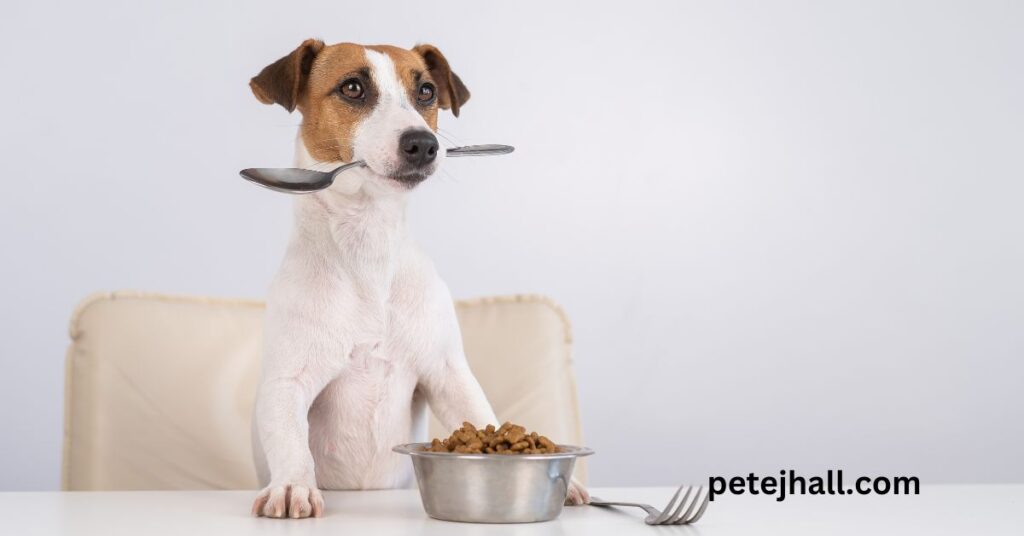A properly regulated diet is a key part of feeding your dog to maintain its excellent health, even after 70 years. For the most part, dogs of just about any breed can eat typical commercial dog foods with no difficulty; however, some breeds and specific individual canines should need to have food prepared for them due to particular overall health issues. Copper storage disease is one such concern, necessitating the adoption of an appropriate low-copper diet for effective management.
This guide will take an in-depth view of a Low Copper Dog Diet: The Definitive Guide, the circumstances under which you may want to feed one to your pet, and how best to address it.
What is Copper Storage Disease?
Copper storage disease (also known as copper-associated hepatopathy; CAH) is a genetic disorder where the liver of a dog is unable to metabolize copper appropriately. Over time, the accumulation of copper in the liver leads to increasing deterioration, eventually surpassing its ability to cope without treatment. The condition is frequently heritable, and specific breeds such as Bedlington Terriers, West Highland White Terriers, and Doberman Pinschers (Figure 3), as well as Labrador Retrievers, are consistent with affected individuals.
Dogs with copper storage disease require a low-copper diet to prevent additional liver damage. Diet: A low-copper diet will help manage and slow the progression to a more severe form of copper storage disorder.
Signs of copper poisoning in dogs
But before I talk about the low-copper diet, let’s see what symptoms of acute poisoning with this element can appear. Your dog may exhibit the following signs of copper storage disease:
- Lethargy and fatigue
- Loss of appetite
- Vomiting
- Diarrhea
- Jaundice is a yellowish discoloration of your skin or eyes.
- Weight loss
- Thirst +++ / Urine Output +++
- Abdominal pain or swelling
- Seizures (in advanced cases)
If you discover any of these symptoms, it is essential to get in touch with a veterinarian for the right diagnosis. If additional confirmation is required, conducting tests such as blood tests, liver biopsies, or ultrasounds can provide complete certainty about the true cause of copper accumulation.
An Insight Into Copper—EEssential Nutrient in Dogs
Copper is a trace mineral that occurs naturally in the environment, and it is vital to all living organisms. In small amounts, it participates in a number of physiological processes like iron absorption and red blood cell formation, as well as maintaining nerve health. If the body stores up copper, particularly in its liver, it can become toxic.
Most dog foods on the market must adhere to specific copper codes when preparing their actual kibble. However, for dogs with a copper storage area disorder, the amount of copper in commercial dog food can be excessive. The idea is to cut back on how much copper a dog takes in while still making sure they receive all the nutrients that are required.

Why Dogs Need To Adapt a Low Copper Diet
Dogs afflicted with copper storage disease (CSD) require a low copper diet. It will help to slow the progression or, in some cases, halt further liver damage by reducing copper accumulation with this specially designed diet.
We will outline the primary justifications for incorporating it into a low-copper diet.
- Less Copper Buildup: With the decrease in copper intake, this type of diet prevents the liver from taking any excess more effectively, helping to stave off a sick liver.
- Maintaining Liver Function and Overall Health: Reducing copper levels allows the liver to recover or improve its function.
- Longer Life: Management of the diet means longer, healthier lives free from liver complications for dogs with copper storage disease.
Analyzing the copper content in dog food
If you’re trying to control your dog’s copper levels, it’s crucial to understand what commercial foods contain and don’t. Most pet food labels do not provide the specific levels of copper. Unfortunately, the only way to tell is by looking at ingredients.
Here’s what to consider:
- Possible foods to avoid: Organ Meats: The liver, kidneys, and heart are high in copper. Dog food often includes organ meats as a protein source in its ingredient list.
- Consume Low-Copper Protein Sources: Choose low-copper protein sources like chicken, turkey, and lamb. Do not feed proteins such as beef liver or duck, which have a high content of copper.
- Beware of Grains: Some grains, like whole wheat and bran, have more copper in them. Go for grain-free options or grains low in copper, such as white rice, which is a safer alternative for dogs that have sensitivities to copper.
- Avoid seafood: Probably the most important food group to avoid, shellfish (like oysters and shrimp) are high in copper. All fish can be high in copper, so choose products made from fish sparingly.
- Metallic Additives: Many commercial dog foods contain copper sulfate or copper chloride. While these ingredients supply copper in a very bioavailable form, you will want to avoid this if your dog is on a low-copper diet.
Top 3 Low-Copper Dog Foods
When choosing commercial dog foods to meet a canine’s nutritional needs, it’s crucial to consider certain factors, as previously mentioned. It is true that finding a commercial dog food with low copper content can be challenging, although there are veterinary and specialty brands available for liver support.
1. Hepatic Feline Dry Food Royal Canin Veterinary Diet
Hepatic is a proprietary formula of Royal Canin that has been designed for dogs with liver problems, in particular copper storage disease. It is copper-restricted and a source of high-quality protein, carbohydrate (corn), and fat to aid liver health.
2. Hill’s Prescription Diet l/d Liver Care ETA
L/D Liver Care, by Hill Formulated without high copper levels, it is an ideal nutrition for dogs needing liver support. Such feeds feature a moderate fat content to reduce liver stress, along with easily digestible proteins.
3. Natural Balance L.I.D.
Natural Balance limited ingredient diets, particularly those based on lamb or chicken, are not specifically designed for copper storage disease, but they may contain fewer ingredients overall. Consult your veterinarian to make sure this product is appropriate for your dog with copper restrictions.
Easy homemade low-copper dog food.

Some dog lovers who wish to prepare meals in the home manage their food-sensitive dogs with low-copper diets. But beware: when it comes to homemade diets, you must balance the diet properly to include essential nutrients your dog needs.
LOW-COPPER DOG FOOD RECIPES 2 Recipes for Low Copper Dog Food Following [[[Read More]]]
Low-Copper Chicken and Rice
Ingredients:
- 2 cups cooked white rice.
- 1 pound of cooked skinless chicken, either breast or thighs
- One cup of fresh green beans should be steamed on low heat.
- Olive Oil (1 Tbsp., Optional)
Instructions:
- Prepare the white rice following package directions.
- Grill or poach the chicken breasts and dice them into 1″ pieces.
- Steam the green beans until cooked through.
- Add all ingredients to a large bowl and mix thoroughly.
- Serve your dog the correct portions for their size and weight.
Recipe 2: Low Copper Lamb and Potato Stew
Ingredients:
- 1 pound lean ground lamb
- Ingredients: 2 medium white potatoes peeled and chopped
- A cup of diced carrots contains 0.11 mg of copper.
- One tablespoon of low-copper sunflower oil
Instructions:
- Brown the ground lamb in a large pan.
- Cook potatoes and dice carrots until they become soft.
- Drain the vegetables and mix them with the lamb.
- Pour in the sunflower oil and mix thoroughly.
- Let the stew cool before serving.
Dogs with low-copper diet supplements
Supplements: Dogs on low-copper diets may need a variety of supplements to address their nutritional deficiencies. Key supplements for dogs on a low-copper diet
Zinc is an important mineral that can reduce the absorption of copper in your digestive system. Dogs on diets lacking copper can benefit from using zinc as a supplement, but you should only do this under your vet’s guidance.
Antioxidants: Vitamin E and C are antioxidants that can provide protection for the liver cells by neutralizing free radicals.
For centuries, people have utilized Milk Thistle, an herb, as a supplement to safeguard the liver. It is abundant in silymarin, a compound that aids in liver regeneration.
Consult your veterinarian before adding any supplements to prevent future health issues from overuse.
Switch to a Low Copper Diet
Always start your dog on a low-copper diet slowly, as quickly transitioning can cause stool issues. The transition steps are as follows:
1. Slow Down: Start by slowly mixing a tiny bit of the new low-copper food with your dog’s current food. Over a period of 7–10 days, slowly increase the ratio to the new diet.
2. Observe Healthy: Watch for any changes in behavior, appetite, and stool quality in your dogs during the development phases. If you see any of those symptoms, call your vet right away.
3. Regular Vet Checkups: After you have your dog on a low copper diet, frequent veterinary checkups are also important. Regular blood tests and liver function checks can show whether the diet is working in controlling copper levels.
Conclusion
A low-copper diet is a powerful weapon in controlling the liver health of your dog and managing this disorder. Understanding the importance of reducing copper intake and selecting or preparing food appropriately is crucial for safeguarding your dog against liver damage and enhancing their quality of life. Work with your veterinarian to create a diet plan specifically for your dog and have him or her checked out on a regular basis. If you provide the right diet and care, dogs with copper storage disease can live happy, long lives.
FAQ: Low Copper Dog Diet: The Definitive Guide
To help answer some frequently asked questions about a low-copper diet for dogs, here is an overview of how to address and prevent copper storage disease in your dog.
What is a low-copper diet for dogs?
What is a low-copper diet for dogs? Low-copper dog food specifically limits how much of the mineral your pup takes in. (), and other liver issues—meaning their systems cannot effectively process and remove it from their body or excrement. Copper inappropriate plugin here_ENTRIES__). Foods that are naturally free of copper make up the diet, reducing the amount of copper the liver needs to acquire and preventing damage.
Why Do Dogs Need a Low-Copper Diet?
For instance, diseases such as copper storage disease (CSD) and other liver-related conditions can impact a dog’s ability to metabolize and excrete copper. This can lead to a copper-loading state in the liver, potentially resulting in hepatic damage or failure. Low Copper Dietaim: reduce copper intake
Symptoms of Copper Toxidity in Dogs
Lethargy, loss of appetite, and vomiting or diarrhea are typical symptoms, with uninhibited copper absorption leading to subsequent weight loss; occasional jaundice (yellowing of the skin/eyes) is possible, along with increased thirst due to severe liver involvement; some affected dogs may even go into a seizure. Take your pet to the veterinarian at the onset of these symptoms.
Which breeds have a higher risk of developing copper storage disease?
Copper storage disease is a genetic predisposition of certain dog breeds, such as Bedlington Terriers, West Highland White Terriers, Doberman Pinschers, Labrador Retrievers, and Dalmatians. Specifically, these breeds may require low copper diets if they exhibit a tendency towards liver issues.
Foods to Avoid in a Dog’s Low Copper Diet
Avoid foods high in copper, such as organ meats (liver and kidneys), shellfish, or whole wheat flour/grains/bran. They should avoid including seafood and certain protein sources like duck in their meals due to their high copper content.

